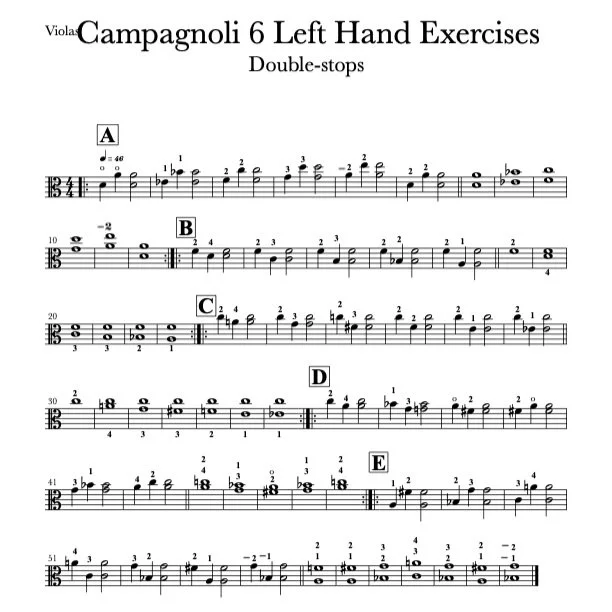IN THIS LESSON
DOUBLE-STOPS GALORE!
Because of the slow, singing nature of Campagnoli, we have a wonderful opportunity to focus on creating beautiful, balanced double stops that resonate in tune.
A) Playing fifths requires careful balance between the two strings. Aim to place your finger right in the middle of the two strings for optimal balance. Search for a comfortable angle to cover both strings in third position in measures 5-6.
B) This exercise focuses on descending the scale on the G string while keeping your 2nd finger in place on the D string. Pay close attention to intonation on the G string notes against the sustained F. In the second half of the exercise, maintain a smooth and gentle vibrato throughout.
C) Similarly, this exercise focuses on descending the scale on the D string while keeping your 2nd finger in place on the A string. Ensure the D string notes are played accurately against the sustained C. Maintain a relaxed and consistent vibrato in the second half of the exercise.
D) Practice playing thirds with two different placements for the 2nd finger. Focus on achieving clean and synchronized finger movements between the two strings.
E) This exercise involves playing sixths, with hand frames changing between pairs of notes. Focus on precise finger placements that resonate gently and simultaneously on both strings. Pay attention to timing and coordination between the fingers on each string.
When you being learning this page, practice taking time to place each finger accurately. As you become fluent in this exercise, focus on singing from one double stop to the next beautifully, and without gaps in sound or traveling sounds. This is an opportunity to practice not only intonation, but expression as well.
-
Sevcik’s Double Stop book is full of material to help students improve their double stop technique.
